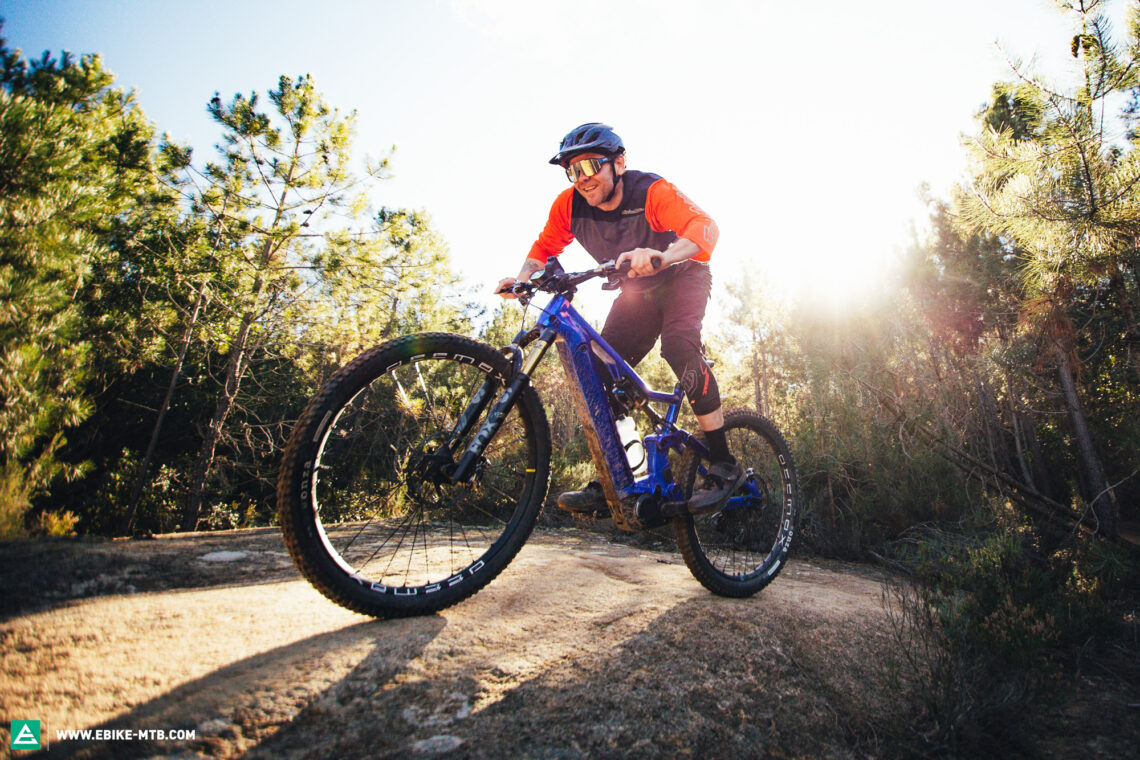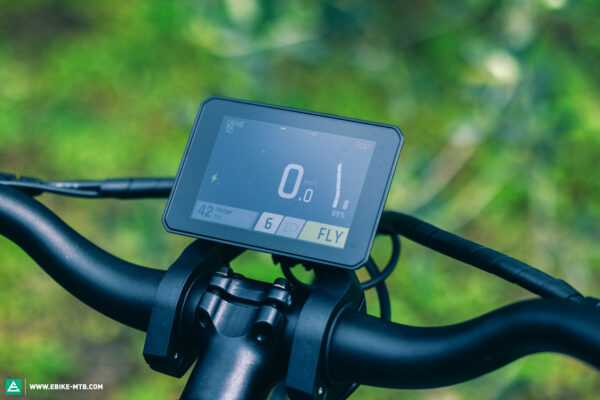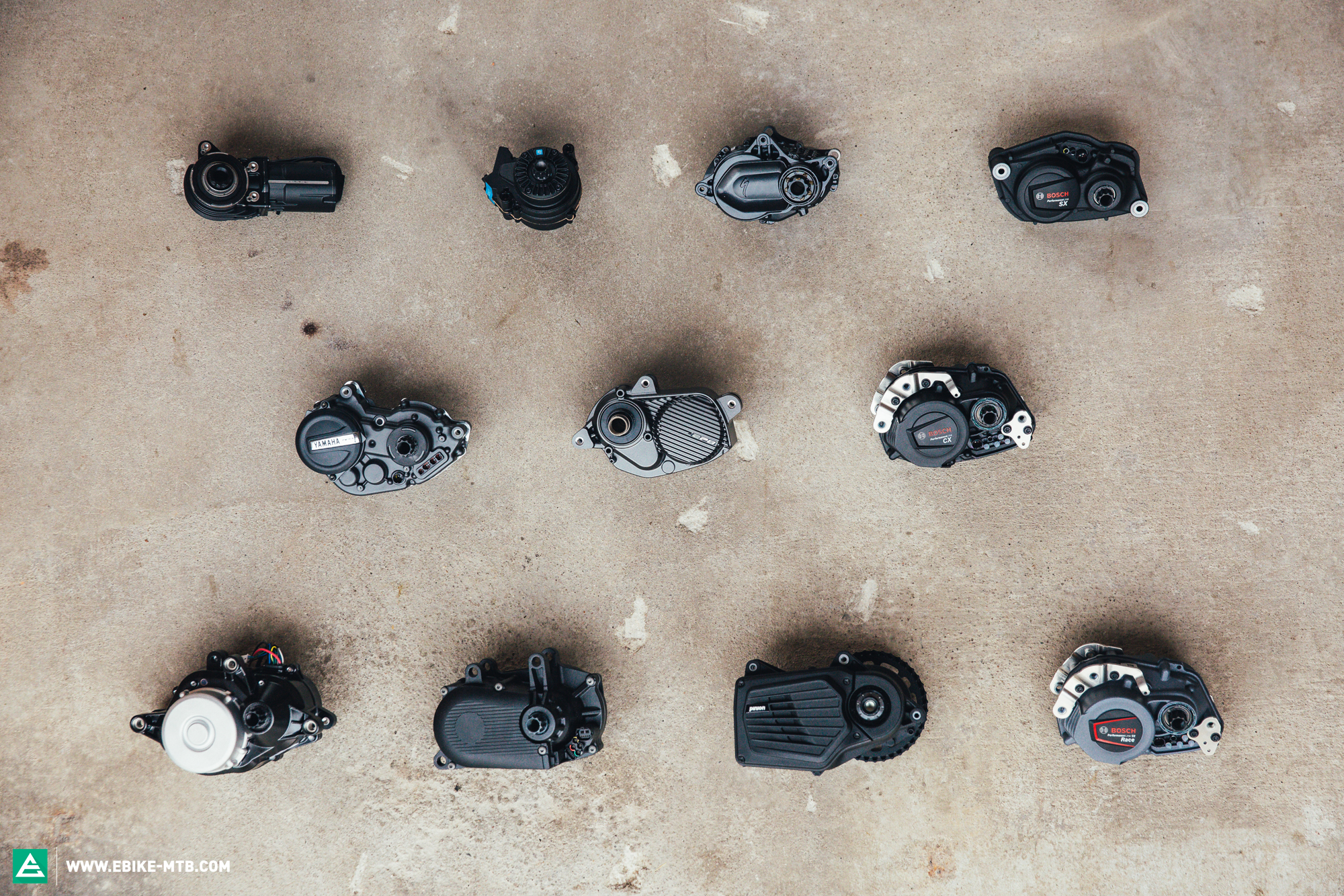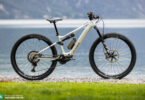P for Panasonic and pioneers! Although not too many people know it, the Japanese tech colossus is one of the true pioneers of ebike motors. With 95 Nm of torque, the Panasonic GX Ultimate is the most powerful motor in the entire test field, at least on paper. How did it fare against the competition in our 2023 e-bike motor test?
This review forms part of our big ebike motor comparison test. Here you’ll find an overview of all 13 motors in review, along with lots of exciting background information, and helpful buying advice for your next purchase!

Even though not too many people know it, Panasonic are one of the oldest manufacturers of ebike motors, which is even more surprising considering that the Japanese tech giant is known mainly for their flat screens. Their motors never really made the big breakthrough in the European and American markets, which is why Panasonic’s e-drives still have a certain underdog status. In 2021, Panasonic introduced the GX Ultimate motor, which has been the flagship model in their e-drive portfolio ever since. With 95 Nm of torque, not only does it put all other Panasonic motors in the shade, but also makes the other motors in this group test look dated. However, Panasonic recently teamed up with the ZEG Group to get a bigger cut of the European market. This explains why the Panasonic GX Ultimate motor is used mainly with bikes from manufacturers like Hercules, Bulls and Flyer. These brands use it with a wide range of bikes, from trekking bikes to sporty eMTBs. The motor is combined with the entire FIT integration ecosystem, which includes the battery, remote and display. Should your motor have a problem, you can rely on FIT’s service network, because Panasonic not only maintains good relations with them but also use them as a direct key partner.

The Panasonic GX Ultimate motor system in detail – Disco sled or powerhouse?
The Panasonic GX Ultimate is the bodybuilder amongst motors in our 2023 comparison test. With a power upgrade provided by Swiss ebike systems supplier FIT, you can bump up the standard 90 Nm torque to 95 Nm – this makes the Panasonic the undisputed torque king in this test. Despite all the power, the Panasonic motor doesn’t stand out from the crowd of full-power motors, tipping the scales at a relatively heavy 2.95 kg, which puts it in the same weight category as the Brose Drive S Mag, and makes it around 150 g heavier than the Bosch Performance Line CX Race.
With Panasonic, bike manufacturers are relegated to using third-party suppliers for the peripheral components – tech brands like Simplo, BMZ and FIT offer a wide selection of different battery sizes.
That said, most bike manufacturers rely on ebike systems supplier FIT, which offers a wide range of remotes and displays. The removable FIT Display Compact can be attached to the standard display mount, and can be exchanged for the bigger FIT Display Comfort. However, both displays sit right in front of the stem, where they’re exposed to impacts in the event of a crash. The handlebar-mounted FIT Basic remote is rather clunky and relies on a rather small, weird-looking joystick, which takes a little getting used to and makes it hard to operate the remote while riding, especially on bumpy terrain. The remote feels a little odd the first time you use it, as it vibrates each time you make a command. However, this is just as practical as it is weird, as the system lets you know that it has executed the command. This feature can be deactivated if you don’t get on with it. As an alternative to third-party components, Panasonic also offer their own bar-mounted Side Colour display/remote unit.



To connect with the Panasonic GX Ultimate motor, you’ll have to use the FIT e-bike control app, because Panasonic don’t have their own app. If the bike comes equipped with a FIT display, you can adapt the layout and appearance to suit your own needs and requirements. The display also provides turn-by-turn directions with a basic breadcrumb trail and distances in metres when the navigation function is activated – this can be programmed via the app. The app also allows you to view the estimated range in the respective support modes, displayed on a map. At the time of this test, adjusting the motor settings wasn’t an option yet, but this feature will soon be available. Alternatively, the Eco, STD and Auto support modes can be adjusted directly from the display, but this isn’t possible with the strongest High mode. However, this feature can’t be compared to the fine tuning function of other manufacturers’ apps, like Bosch’s for example. Furthermore, you can use the app to display the bike’s last known position, which the system only updates when the motor is on. To activate a motion alarm feature, you’ll have to retrofit the FIT E-Bike Tracker.


The Panasonic GX Ultimate motor system in review – raw power
The Panasonic GX Ultimate features three standard modes: Eco, STD and High; plus a fourth dynamic, automatic mode (Auto) that adjusts the support level according to the riding situation. While the dynamic automatic mode feels abrupt and unnatural on level ground, it feels in its element on uphill trails. Here it delivers its power more precisely and sensitively than in the strongest mode, and is much easier to control – but still far less sensitive than Bosch’s eMTB mode. In the strongest support mode, High, the Panasonic motor packs a punch, providing powerful support and delivering an authentic shuttle feeling on fire roads, even at low cadences. Not only was this clearly noticeable on the trail, but also in the lab tests we carried out at the Velotech institute. The mechanical power increases quickly and the Panasonic GX Ultimate reaches its peak power at a low cadence, allowing riders of all fitness levels to call up its full power while pedalling seated and with relatively little effort.


That said, the motor tune of the Panasonic GX Ultimate is on the rough side, which can be an issue particularly for eMTB newbies. The direct response of the highest support mode makes the GX Ultimate clearly more boisterous and harder to control than the Bosch Performance Line CX or Giant SyncDrive Pro 2 in the highest support modes. Moreover, the disengagement of the motor when reaching the 25 km/h limit is clearly noticeable, which makes it feel as if the motor switched itself off rather than winding down slowly. On technical climbs, the long overrun makes it easier for experienced riders to push over ledges and steps, but requires you to keep a finger on the brake to prevent the motor from pushing you further if you want to stop. Given the brusque motor tune and long overrun, it would be great to be able to adjust the riding modes via the app, as a more gentle tune would make it suitable for a wider range of riders.
Our conclusions about the Panasonic GX Ultimate
The Panasonic GX Ultimate churns out tons of power but could do with a more harmonious tuning. While experienced riders still manage to control its boisterous character, beginners might get overwhelmed by it quite easily. The ability to adjust the motor characteristics via the app would help with this significantly. The Panasonic GX Ultimate still has a few drawbacks in this regard, and also lags behind the competition in terms of connectivity.
Tops
- Provides a true shuttle feeling uphill
Flops
- Abrupt power delivery
- The power is hard to control
For more information, visit panasonic.eu
The test field
For an overview of our big ebike motor comparison test click here
All ebike motors in test: Bosch Performance Line CX (Click for review) | Bosch Performance Line CX Race (Click for review) | Bosch Performance Line SX (Click for review) | Brose Drive S Mag (Click for review) | FAZUA Ride 60 (Click for review) | GIANT SyncDrive Pro2 (Click for review) | Panasonic GX Ultimate | Pinion MGU E1.12 (Click for review) | Shimano EP801 (Click for review) | Specialized SL 1.2 (Click for review) | Specialized 2.2 (Click for review) | TQ HPR 50 | Yamaha PW-X3 (Click for review)

Did you enjoy this article? If so, we would be stoked if you decide to support us with a monthly contribution. By becoming a supporter of E-MOUNTAINBIKE, you will help secure a sustainable future for high-quality cycling journalism. Click here to learn more.
Words: Felix Rauch, Mike Hunger Photos: Various









